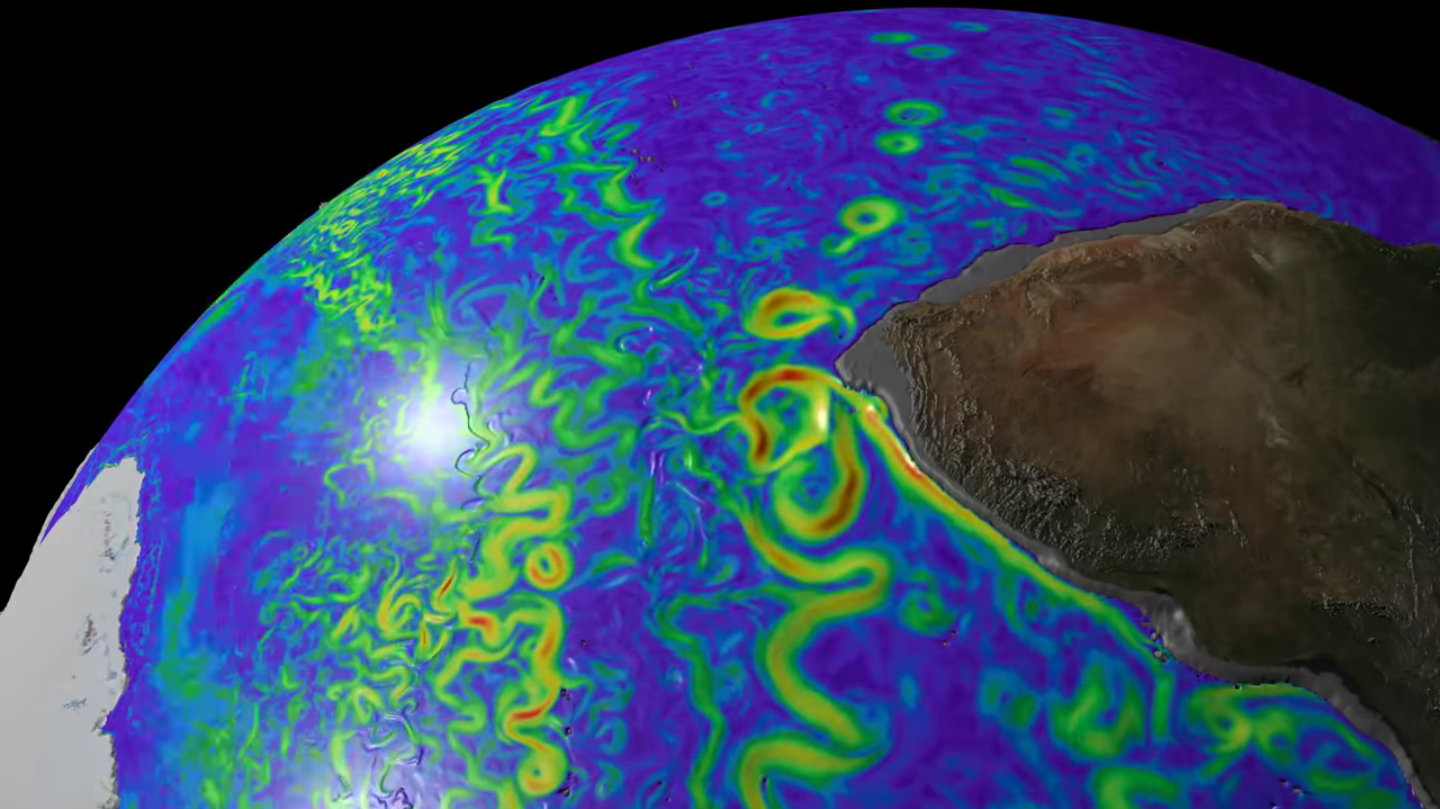We begin with Raijin, the Shinto god of thunder, lightning, and storms.
No, seriously — that’s what Australian researchers named the supercomputer that they used to make this incredibly detailed simulation of what’s going on at the bottom of the Southern Ocean around Antarctica. That cold, dark abyss — no, not that one — may seem remote and hard to understand, but it’s actually a key player in Earth’s response to climate change.
It should come as no surprise that the surface water around Antarctica is very cold. What might be more surprising is that it’s also very salty. That’s because, when sea ice forms, it rejects salt back into the surrounding water. The resulting cold, salty water is very dense and thus cascades down to the bottom of the ocean, where it spreads out. Here’s more from a press release about why this matters:
The movement of this dense water is vital. It is the most oxygenated water in the deep ocean and its extreme density and coldness drive many of the significant currents in the major ocean basins connected to the Southern Ocean.
The distinctly different densities of water that move around Antarctica also make it important in regards to climate change. Because the most dense water forms near the surface, close to Antarctica before descending to the ocean floor, any warming that occurs near the surface can be drawn down into the deep ocean.
Importantly, this drives more heat and more carbon into the deep ocean that would otherwise have returned to the atmosphere.
It took Raijin seven hours to process every one second of this nearly four-minute animation. According to Andy Hogg, a professor of earth sciences at Australia National University and lead researcher behind the simulation, it was well worth the computing power: “Being able to actually see how the bottom water moves in three dimensions rather than just looking at numerical, two-dimensional outputs has already opened new areas for scientific research,” he said in the press release.
Personally, my favorite part of the simulation comes at the 3:05 mark, where it looks like South Africa is blowing smoke rings. But really, the whole thing is pretty cool and will surely help scientists understand this largely mysterious part of the world. It seems only fitting that such a simulation would come from Raijin, a deity who in Japanese mythology is both feared and respected for his control over nature.
Japanese mythology also says that children should cover their belly buttons during thunderstorms, lest Raijin eat their tummies. Do with that what you will.



